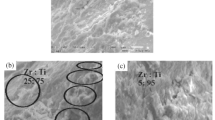Abstract
Investigations on the behavior of the radioactive element technetium frequently use a stable isotope of rhenium as an analogue. This is justified by citing the elements’ similar radii, major oxidation states of +7 and +4, and eH-pH diagrams. However, recent studies (e.g.,[1] have shown this analogy to be imperfect. Therefore, one goal of our study is to compare the behavior of these elements with emphasis on the adsorption of perrhenate and pertechnetate (the major forms of Re and Tc in natural waters) on mineral surfaces.
Quantum mechanical calculations were performed on the adsorption of these two anions on relaxed clusters of the well-characterized sulfide galena (PbS) and some other Fe and S-bearing materials. With these calculations, we gain insight into differences between the anions’ adsorption behavior, including geometry, adsorption energies, and electronic structure. Differences between interactions on terraces and step edges, the effects of co-adsorbates such as Na+ and Cl-, and chloride complexation are also explored. The influence of water was calculated using homogeneous dielectric fluids.
As a complement to the calculations, batch sorption tests are in progress involving ReO4-/TcO4- solution in contact with Fe metal, 10% Fe-doped hydroxyapatite, goethite, hematite, magnetite, pyrite, galena, and sphalerite.
Similar content being viewed by others
References
M. J. Wharton, B. Atkins, J. M. Charnock, F. R. Livens, R. A. D. Pattrick, and D. Collison, “An X-ray absorption spectroscopy study of the coprecipitation of Tc and Re with mackinawite (FeS),” Applied Geochemistry, vol. 15, pp. 347–354, 2000.
D. G. Brookins, “Rhenium as analog for fissiogenic technetium: Eh-pH diagram (25degC a bar) constraints,” Applied Geochemistry, vol. 1, pp. 513–517, 1986.
J. G. Darab and P. A. Smith, “Chemistry of technetium and rhenium species during low-level radioactive waste vitrification,” Chemistry of Materials, vol. 8, pp. 1004–1021, 1996.
O. Muller, W. B. White, and R. Roy, “Crystal Chemistry of Some Technetium-Containing Oxides,” Journal of Inorganic & Nuclear Chemistry, vol. 26, pp. 2075–2086, 1964.
R. Colton, “Technetium Chlorides,” Nature, vol. 193, pp. 872, 1962.
V. A. Volkovich, I. May, J. M. Charnock, and B. Lewin, “Reactions and speciation of technetium and rhenium in chloride melts: a spectroscopy study,” Physical Chemistry Chemical Physics, vol. 4, pp. 5753–5760, 2002.
D. A. Cataldo, R. E. Wildung, and T. R. Garland, “Root Absorption and Transport Behavior of Technetium in Soybean,” Plant Physiology, vol. 73, pp. 849–852, 1983.
N. Ishii, K. Tagami, and S. Uchida, “Physicochemical forms of technetium in surface water covering paddy and upland fields,” Chemosphere, vol. 57, pp. 953–959, 2004.
M. J. Frisch, G. W. Trucks, H. B. Schlegel, G. E. Scuseria, M. A. Robb, J. R. Cheeseman, J. A. M. Jr., T. Vreven, K. N. Kudin, J. C. Burant, J. M. Millam, S. S. Iyengar, J. Tomasi, V. Barone, B. Mennucci, M. Cossi, G. Scalman, N. Rega, G. A. Petersson, H. Nakatsuji, M. Hada, M. Ehara, K. Toyota, R. Fukuda, J. Hasegawa, M. Ishida, T. Nakajima, Y. Honda, O. Kitao, H. Nakai, M. Klene, X. Li, J. E. Knox, H. P. Hratchian, J. B. Cross, C. Adamo, J. Jaramillo, R. Gomperts, R. E. Stratmann, O. Yazyev, A. J. Austin, R. Cammi, C. Pomelli, J. W. Ochterski, P. Y. Ayala, K. Morokuma, G. A. Voth, P. Salvador, etc., “Gaussian 03, Revision C.02.” Wallingford CT: Gaussian, Inc, 2004.
U. Becker, S. P. Greatbanks, K. M. Rosso, I. H. Hillier, and D. J. Vaughan, “An embedding approach for the calculation of STM images: Method development and application to galena (PbS),” Journal of Chemical Physics, vol. 107, pp. 7537–7542, 1997.
W. R. Wadt and P. J. Hay, “Abinitio Effective Core Potentials for Molecular Calculations -Potentials for Main Group Elements Na to Bi,” Journal of Chemical Physics, vol. 82, pp. 284–298, 1985.
C. E. Check, T. O. Faust, J. M. Bailey, B. J. Wright, T. M. Gilbert, and L. S. Sunderlin, “Addition of polarization and diffuse functions to the LANL2DZ basis set for p-block elements,” Journal of Physical Chemistry A, vol. 105, pp. 8111–8116, 2001.
A. A. Rashin and B. Honig, “Reevaluation of the Born Model of Ion Hydration,” Journal of Physical Chemistry, vol. 89, pp. 5588–5593, 1985.
B. K. Said, M. Fattahi, C. Musikas, R. Revel, and J. C. Abbe, “The speciation of Tc(IV) in chloride solutions,” Radiochimica Acta, vol. 88, pp. 567–571, 2000.
P. C. Zhang, J. L. Krumhansl, and P. V. Brady, “Boehmite sorbs perrhenate and pertechnetate,” Radiochimica Acta, vol. 88, pp. 369–373, 2000.
Author information
Authors and Affiliations
Rights and permissions
About this article
Cite this article
Anderson, B.E., Becker, U., Helean, K.B. et al. Perrhenate and Pertechnetate Behavior on Iron and Sulfur-Bearing Compounds. MRS Online Proceedings Library 985, 1209 (2006). https://doi.org/10.1557/PROC-985-0985-NN12-09
Received:
Accepted:
Published:
DOI: https://doi.org/10.1557/PROC-985-0985-NN12-09




